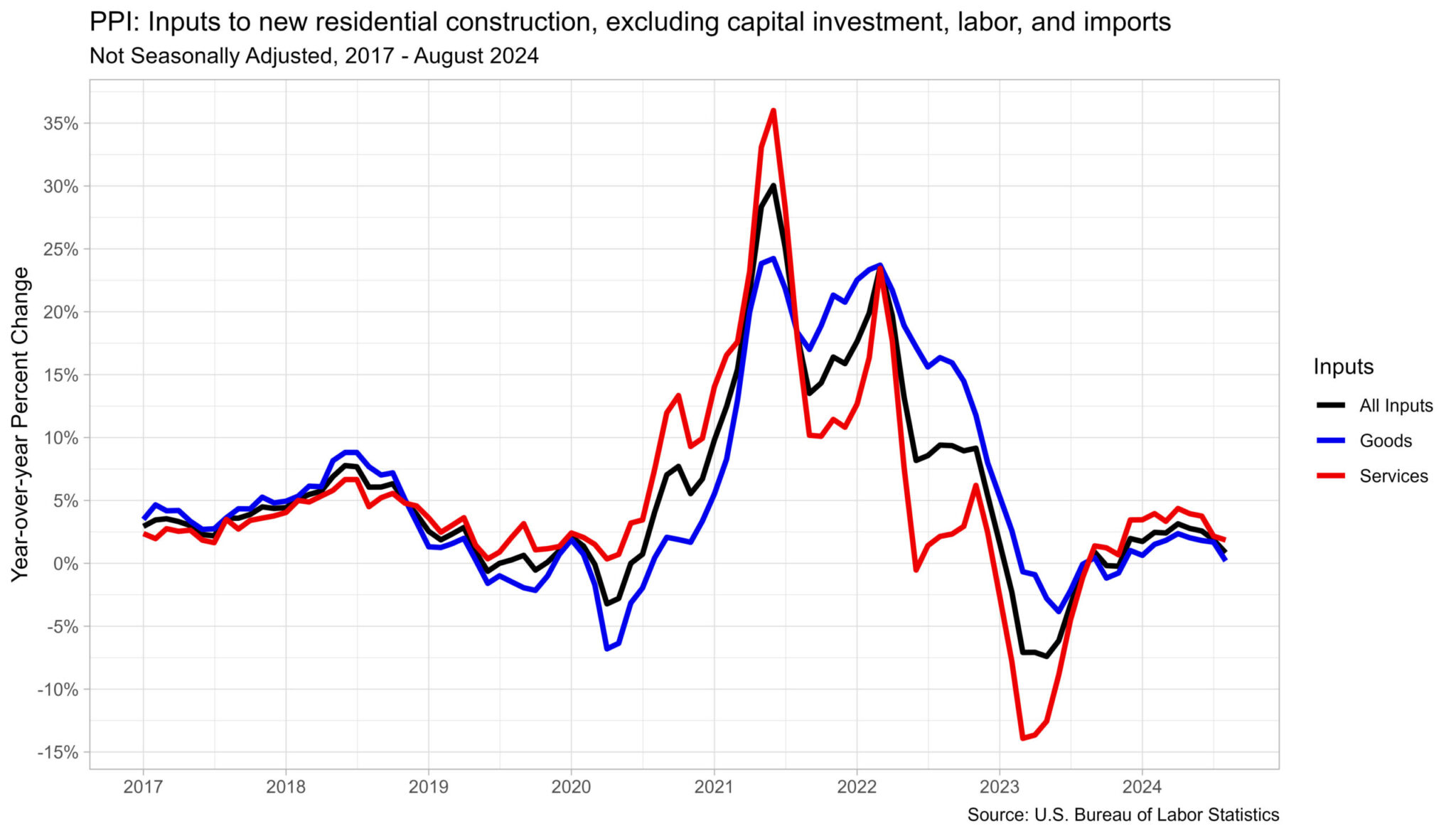Prices for inputs to new residential construction, excluding capital investment, labor and imports decreased 0.1% in August according to the most recent Producer Price Index (PPI) report published by the U.S. Bureau of Labor Statistics. Compared to a year ago, this index was up 0.8% in August after a 1.8% increase in July. The inputs to new residential construction price index can be broken into two components—one for goods and another for services. The goods component increased 0.2% over the year, while services increased 1.9%. For comparison, the total final demand index increased 1.7% over the year in August, with final demand goods flat and final demand services up 2.6% over the year.
Input Goods
The goods component has a larger importance to the total residential inputs price index, around at 60%. The price of inputs to residential construction, goods, remained flat in August after increasing 0.1% in July. The input goods to residential construction index can be further broken down into two separate components, one measuring energy inputs with the other measuring goods less foods and energy inputs. The latter of these two components simply represents building materials used in residential construction, which makes up around 93% of the goods index. Prices for inputs to residential construction, goods less food and energy, were up 1.6% in August compared to a year ago. This year-over-year growth has come down since April, when it was at 2.5% and remains well below the growth in August of 2022, when it was at 14.7%.
The graph below focuses on the data since the start of 2023 for residential goods inputs. Energy prices have retreated over the past year, with only two periods of growth in 2024.
Input Services
Prices of inputs to residential construction, services, fell 0.2% in August after remaining flat in July. The price index for service inputs to residential construction can be broken out into three separate components, a trade services component, a transportation and warehousing services component, and a services less trade, transportation and warehousing component. The most vital component is trade services (around 60%), followed by services less trade, transportation and warehousing (around 29%), and finally transportation and warehousing services (around 11%).
Discover more from Eye On Housing
Subscribe to get the latest posts sent to your email.
This article was originally published by a eyeonhousing.org . Read the Original article here. .



